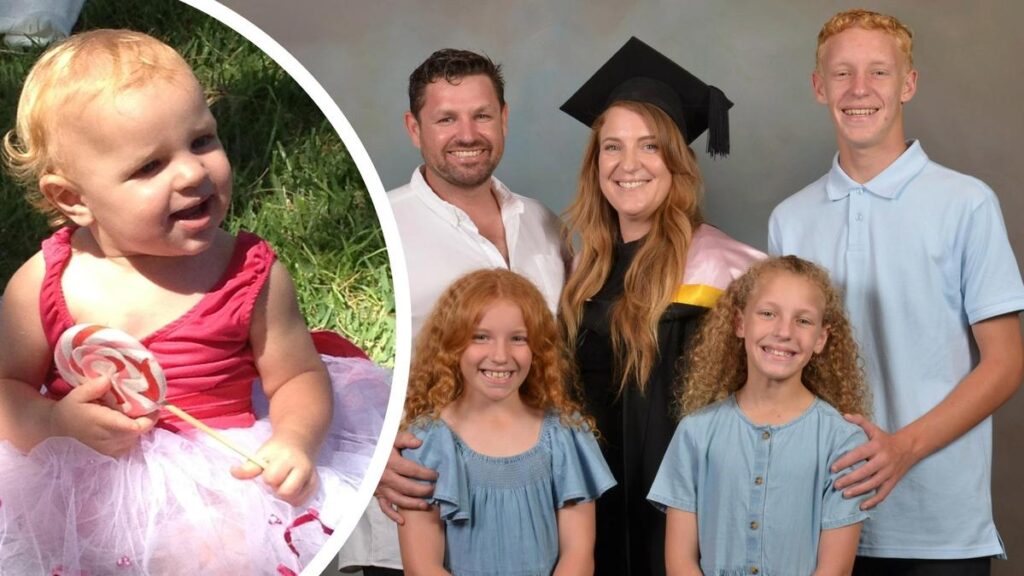
Melanie Andrews with her husband and thee children Chase Paisley and Eden. Her daughter Mylee, right, suddenly dies in her sleep.
When Melanie Andrews kissed her 15-month-old daughter Mylee goodnight, she never imagined it would be for the last time. The Perth mother awoke to a nightmare that no parent should endure: Mylee had died suddenly in her sleep, without a sound or warning.
“We put her to bed a happy, healthy little girl, and when I went to get her in the morning, she had died sometime during the night,” Andrews recalled. Her daughter, with her strawberry blonde hair and big blue eyes, was gone, leaving an unfathomable void in the family.
Ms. Andrews shared her heart-wrenching story ahead of Red Nose Day, a campaign dedicated to raising funds and awareness for Sudden Infant Death Syndrome (SIDS) research. “I just remember whispering, ‘Is this really happening?’ It seemed so surreal, and I couldn’t believe our little girl was gone,” she said.
The Unseen Condition
For three years, Mylee’s death remained classified as unexplained. The family struggled with the uncertainty until testing revealed an undiagnosed immune condition exacerbated by a bacterial infection. “You live with guilt every day, wondering if you could have done anything differently,” Andrews expressed. “To know that her death was preventable added another layer of complexity.”
This revelation became a turning point for Andrews, who resolved to prevent other families from experiencing similar pain. “I realized that if I wanted to see change, I had to be the change,” she explained. This determination led her to the University of Western Australia, where she pursued a Bachelor of Biomedical Science, graduating with honors. She is now undertaking her PhD.
A Mission for Answers
Andrews’ PhD research focuses on potential links between certain bacteria, immune responses, and sudden, unexplained deaths in childhood—a rare and devastating occurrence that continues to puzzle medical experts. “It rocked our entire world,” she said. “It changed who I am and what I thought of life.”
Her research is deeply personal, driven by the memory of Mylee. “Mylee was such a happy, cheerful, bubbly little girl. We would never have had any indication that anything was wrong,” she remembered. “My ultimate goal is that no family ever feels what we did and never has to endure losing a child because it is the worst possible pain you could imagine.”
Supporting Red Nose Day
Ms. Andrews emphasizes the importance of Red Nose Day, which supports families who have lost children and aims to prevent future tragedies. “Getting involved and supporting Red Nose Day really supports families like mine who have lost children to get answers,” she said. “It supports other families who have little ones, and hopefully, we can prevent them from dying in the future.”
“Mylee’s death was preventable, and I want to ensure that no other family has to endure this pain.”
As Red Nose Day approaches, Andrews’ story serves as a poignant reminder of the importance of research and awareness in preventing sudden infant deaths. Her journey from grieving mother to dedicated researcher highlights the resilience and determination of those who turn personal tragedy into a mission for change.
While the loss of Mylee remains a profound sorrow, Andrews’ work offers hope that future families may be spared such heartache. Her commitment to understanding and preventing unexplained childhood deaths is a testament to the enduring love for her daughter and a beacon of hope for others.






